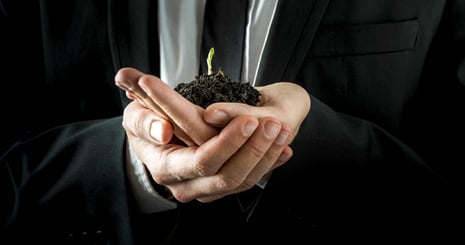Prepare For the Worst with the Best in the Business
Experience capable, consistent, and easy-to-use business continuity management software.
When choosing the right Business Impact Analysis (BIA) software, you need to select a tool that matches your organization’s size, capabilities, and continuity goals. This guide breaks down the key factors to help you evaluate your options and avoid common pitfalls.
Five Considerations When Choosing BIA Software
Before selecting a BIA tool, it’s essential to assess your organization’s structure, continuity needs, and internal resources. Each of the following areas will help you narrow down what type of solution is most appropriate for your situation.
1. Organization Size and Complexity
For Small to Medium Businesses
If your company has fewer than 15–20 business units and operates within a single line of business, you may not need a specialized platform. Instead:
- Third-party BIA templates can be quickly deployed and effective if your team has some foundational knowledge. Find a BCMMetrics free BIA checklist.
- Custom Excel-based templates offer greater flexibility and are preferable to Word due to their ability to aggregate and export data. However, success depends on your team’s comfort with BCM methodology and manual calculations.
For Large Enterprises
For companies with 25 or more business units or multiple lines of business, dedicated BIA software is typically the better fit. These tools:
- Handle complex dependencies and larger datasets.
- Offer advanced reporting and dashboards.
- Support multiple users, workflows, and standards compliance.
2. BIA Process Requirements
Effective BIA software should support the full BIA lifecycle, including:
- Identifying critical business functions
- Assessing impact (financial, operational, reputational).
- Setting RTOs and RPOs for critical processes.
- Mapping dependencies (systems, people, vendors).
- Integrating with your broader risk and recovery strategy.
3. Budget Considerations
Software Costs
Look at both upfront and ongoing costs (subscription, implementation, updates).
Make sure that you compare that investment to the potential cost of being unprepared for a crisis.
Resource Costs
Account for internal resources needed for setup, data gathering, analysis, and training.
Long-Term Value
Evaluate the ROI: Does the software reduce downtime, improve compliance, or make reporting easier? The best software should support operational resilience, not just check a box.
4. Key Features to Look For
- Data Collection & Analysis: Can it simplify and standardize inputs?
- Reporting & Visualization: Are outputs digestible for leadership?
- Collaboration & Workflow: Can team members contribute and review efficiently?
- Integration: Does it work with your existing risk or IT tools?
- Customization: Can you adjust questionnaires, scales, and logic to fit your org?
5. Implementation and Support
Start by developing a clear implementation plan that outlines your internal timeline, resource allocation, and ownership. Make sure this includes clear communication and buy-in from key stakeholders.
Ensure all users receive appropriate training on how to use the software and the fundamentals of BIA and BCM methodology. A lack of understanding in either area can result in inconsistent data and limited usefulness.
Evaluate the vendor’s long-term support options, including access to a responsive support team, a searchable knowledge base, and regular software updates. This will help ensure the tool remains valuable and usable as your program evolves.
6 Tips for Using Software To Do BIAs
I also want to pass on some general tips on how to stay out of trouble when using software tools to do BIAs:
1. Know your BCM concepts
Before adopting BIA software, ensure your team understands core business continuity concepts, such as RTOs (Recovery Time Objectives) and RPOs (Recovery Point Objectives), as well as how to evaluate the impact of business disruptions. Without this foundational knowledge, the software will not deliver meaningful results.
2. Understand how the tool calculates criticality
Every tool uses its own method to score or rank critical processes. It’s important that you know exactly how your selected software performs these calculations so you can interpret the results and confidently present them to stakeholders.
3. Keep the focus
Don’t confuse the purpose of a BIA with recovery planning. A BIA is about prioritizing what’s critical to the business. It sets the foundation for recovery but doesn’t build the recovery plans themselves. Stay focused on identifying and ranking what matters most.
4. Align with standards
Choose a tool that maps to recognized BCM standards like ISO 22301 or FFIEC. This ensures that your assessments align with audit and regulatory expectations and allows for smoother integration into your broader continuity program.
5. Export and aggregate
Your tool should allow easy data export and provide aggregation capabilities. If the software locks your data in or makes it hard to extract information, it limits your ability to analyze and report findings across the organization.
6. Avoid overload
Lengthy questionnaires can frustrate participants and reduce completion rates. A well-designed BIA survey should be concise and targeted. If your tool prompts users with more than 50 questions, it may be a sign that the process needs refinement.
Choosing the Right BIA Software For You
There’s no single "best" BIA software, only the best fit for your context. The right tool will match your team’s capabilities, support your process needs, and deliver clear outputs that drive better decisions.
One of the most common missteps is choosing a tool that’s more complex or feature-heavy than necessary. Many teams invest in expensive platforms, thinking they’ll automate the work, only to find the software too difficult to implement or adopt. As a result, the tool is shelved, and the BIA is never completed.
Whether you're starting with templates or moving to a platform like BCMMetrics, the focus should be on clarity, efficiency, and actionability. The right solution is the one your team will use well.
Ready to Make Your BIA Process More Effective?
Business continuity experts at MHA Consulting designed BCMMetrics’ BIA On-Demand for real-world teams. It strikes a balance between functionality and ease of use, aligning with major standards such as ISO 22301.
Whether you're managing a handful of business units or leading an enterprise-wide effort, we can help you make your BIA process smarter and more actionable.
Take a virtual tour and see how it works for your team.
FAQ:
What core features should BIA software include?
Look for software that simplifies data collection and analysis, supports customizable workflows, integrates with existing systems, and offers exportable, dashboard-level reporting. Customization options are also essential to align the tool with your internal standards and terminology.
What role does budget play in selecting BIA software?
Consider not only the initial software cost but also implementation, training, and internal resource investment. Evaluate the long-term value by estimating how the tool can reduce downtime, improve compliance, and make your BC program more efficient.
Can BIA software replace recovery planning?
No. A BIA helps you identify and prioritize critical business processes, but it does not create recovery plans. Think of the BIA as a foundation, the plan is the structure you build on top of it.
How can I tell if a BIA software is the right fit?
The right solution is one your team can actually use effectively. It should be aligned with your team’s skills, your organization’s size, and your process complexity. Clarity, usability, and actionability matter more than a long list of features.

Michael Herrera
Michael Herrera is the Chief Executive Officer (CEO) of MHA. In his role, Michael provides global leadership to the entire set of industry practices and horizontal capabilities within MHA. Under his leadership, MHA has become a leading provider of Business Continuity and Disaster Recovery services to organizations on a global level. He is also the founder of BCMMETRICS, a leading cloud based tool designed to assess business continuity compliance and residual risk. Michael is a well-known and sought after speaker on Business Continuity issues at local and national contingency planner chapter meetings and conferences. Prior to founding MHA, he was a Regional VP for Bank of America, where he was responsible for Business Continuity across the southwest region.
.png)
.png)




